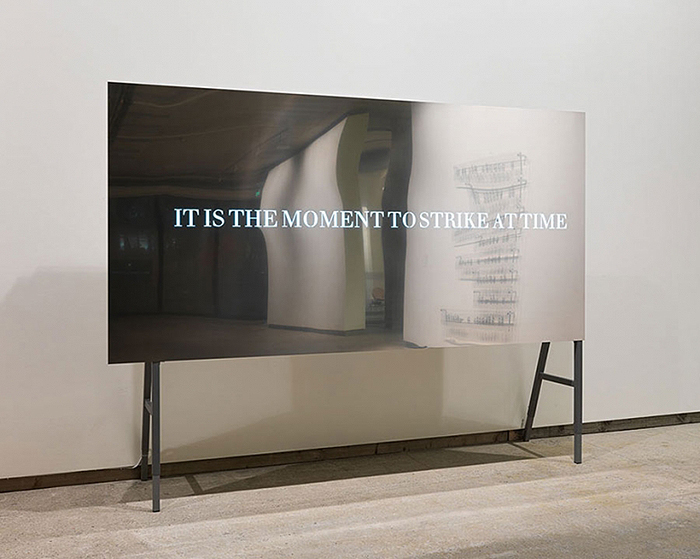In trying to reimagine research practice, I’ve been inspired by Mosireen in Egypt and Observatorio Metropolitano in Madrid. The foremother of them all is perhaps Sarai, the remarkable New Delhi collective. Formed as an off-shoot of the Centre for the Study of Developing Societies, Sarai has created a coalition of researchers and practitioners for the past decade.
As befits, their legendary status in “new media” circles, Sarai maintain a comprehensive website that is at the center of their practice. Here they define their mission as:
a commitment towards developing a model of research-practice that is public and creative, in which multiple voices express and render themselves in a variety of forms. Through these practices that range from art practice to publication, academic research to the organization of discursive events, setting up of media labs and creative practices in locality labs in disadvantaged neighbourhoods of the city, reflecting upon the culture of freedom, in speech and in software, we have sought to participate in and cultivate a public domain that seeks to find a new language of engagement with the inequities, as also the possibilities, of the contemporary world.
So some distinctive notes created by Sarai are their involvement with visual arts practice as a form of research, “new media” work and software development and a commitment to openness.
Let’s quickly note a couple of these projects before thinking about the challenge they pose to activist research in the overdeveloped world. I am particularly struck by Cybermohalla–a word formed by adding the Hindi and Urdu word mohalla, meaning neighborhood, implying alleys, street corners, and a sense of place both in the city and online. Since 2001, this project has collaborated with young people in some of the newer “colonies” or districts of New Delhi. The hope was that:
if the space can draw a relation between writing, researching, experimenting, and tap into different forms of knowledge, modes of cultural expression and infrastructures of circulation of these within the neighbourhood, then it will be able to build new grounds of knowledge.
The knowledge generated in such projects is shared through print, visual and online sources. One example is the range of Sarai Readers on a range of topical subjects, available copyleft and free of charge on the website. The Readers differ from the Anglo-American model in that they give space to shorter writings than are typical in the academic context, often more experimentally written and less burdened with academic apparatus. There are substantive interviews with key figures, visual interventions and so on.
Some common threads link the different projects from India, Egypt, and Spain despite the very different contexts in which they take place. Each seems to serve as a key source of information regarding what’s happening in the giant cities created by financial globalization. While Madrid’s three million people would disappear into New Delhi, which has a population density of 37,000 per square kilometer, each city has been transformed over the past twenty-five years of neo-liberalism.
Perhaps it is the very belatedness of the impoverishing, distancing, hierarchizing effects of this moment of global capital’s transformation in its former capitals like New York that has been so traumatizing and galvanizing for us. We should start to look with humility at those who preceded us in this struggle.
Next, each group privileges making its work available free, producing it rapidly and in as many formats as possible. These tactics strike at the heart of the walled, gated communities that call themselves universities in the Anglophone world, always happy to think of themselves as elitists in the intellectual sense. Can we continue to assume that we can still be egalitarian in other ways while maintaining such hierarchies?
Consider these scenarios: a person wants to join your department/program/seminar having attended free, open classes previously. If it’s a class at the Public School with top academics like my colleague Alex Galloway, you’re going to be impressed. What if it’s a person you’ve never heard about before?
Will you consider publishing your own work free and open source? People worry about the imprimatur of double-blind peer review. If you want it, you can get it at Open Humanities Press. But this is not so simple. I’ve benefited from such reviews, especially for my recent book. I’ve also run foul of the system, where a person fundamentally unsympathetic to the project has been allocated to read it. It even happens to Gayatri Spivak, according to her talk at Left Forum:)
Set aside the bias question, and assume it always works for the best. Do we want this kind of closed door process? Would it not be preferable to have discussion in open ways? If material is published digitally, it can be corrected and changed easily as long as people are making comments or suggestions. If we find ourselves reluctant to participate in such interaction, perhaps we are less invested in change than we think? Or is the overload already demanded by the neoliberal university such that we simply can’t?
I’m for quick, direct, open publication but I don’t want to pretend it’s a panacea. It may be best suited to moments of rapid change and not so central when things are more locked down. I think nonetheless that we have to assume that the crisis in research, whether activist, militant, corporate or academic, is not limited to debt and funding but goes to the core of the project.


Pingback: Movement Time | Occupy 2012